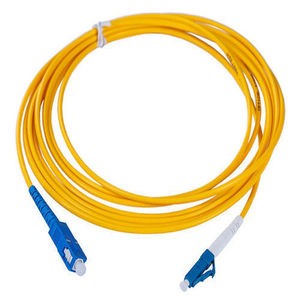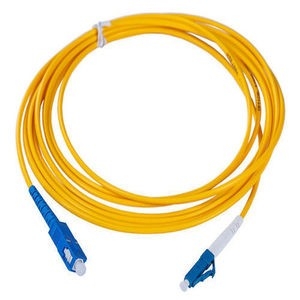Uncategorized
Patch Cord A Closer Look : Types, Examples, and Advantages
Patch Cord
Patch cord play a crucial role in the world of networking and connectivity. They are versatile, widely used, and come in various types to suit different applications. In this article, we will delve into the fundamentals of patch cords, explore examples, and highlight their advantages.
What is a it Used For?
A patch cable or patch lead, is an essential component in networking. Its primary purpose is to establish a connection between two devices. This connection allows for the transmission of data, signals, or power between these devices. Patch cords are commonly employed in applications ranging from data centers and telecommunications networks to home entertainment systems.
What is an Example?
One example is the SC/UPC-LC/UPC Patch Cord offered by Insight Infosys. This patch cord is designed with SC and LC connectors, making it compatible with a wide range of devices and applications. It provides a seamless and reliable connection for efficient data transmission.
What is LC LC ?
The LC LC patch cord is a specific type of patch cord featuring LC connectors on both ends. LC connectors are known for their small form factor and high-performance capabilities. These patch cords are ideal for high-density installations where space is a critical consideration. They are commonly used in data centers and telecommunications networks.
What is the Difference Between a Patch Cord and an Ethernet Cable?
While both patch cords and Ethernet cables serve the purpose of connecting devices, they are designed for different applications. An Ethernet cable is a broader term that encompasses various types of cables used for networking. It includes cables like Cat5e, Cat6, and Cat7, which are used for long-distance connections within a network. On the other hand, a patch cord is a specific type of cable designed for shorter connections, often within a rack or between adjacent devices.

Patch Cord
Advantages
Patch cords offer several advantages:
- Flexibility: They provide a flexible and easily manageable solution for temporary or short-term connections.
- High Performance: Patch cords are designed to deliver high-speed data transmission with minimal signal loss.
- Easy Installation: They are plug-and-play, making them easy to install and replace as needed.
- Space Efficiency: Patch cords are compact, making them suitable for high-density environments like data centers.
- Cost-Effective: They are a cost-effective solution for establishing connections in a network.
In conclusion, these are indispensable components in networking, providing reliable connections for various applications. Understanding their types, examples, and advantages can help you make informed decisions when implementing or upgrading your network infrastructure.
For more information and a wide range of patch cords, visit Patch Cords Online.
Insight Infosys Collection Link<—


